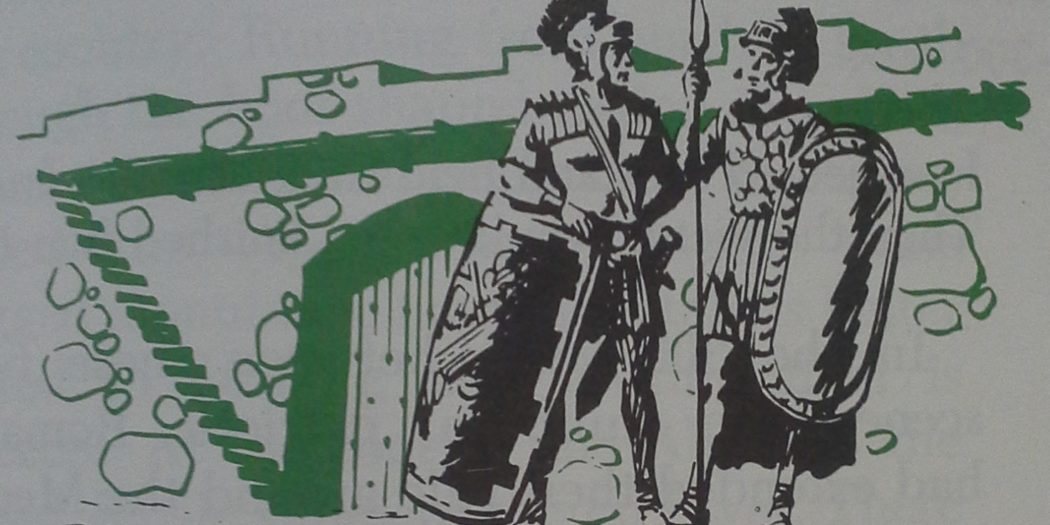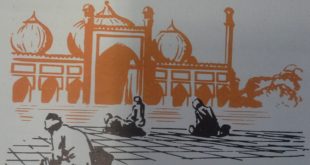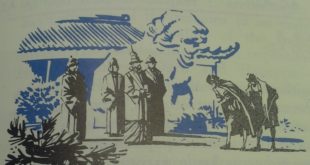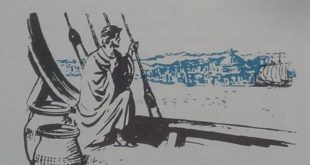Today we speak the words, “I am a World citizen,” with pride. To the people of the ancient world the statement, “I am a Roman citizen,” was a badge of high honour. Beginning as a small city state in Italy, Rome grew into a vigorous republic and finally into an empire so mighty that it included the whole of the Mediterranean world. Even after Rome’s grandeur had waned, its influence lived on among later peoples.
Rome’s history is a reminder that the destiny of a nation rests more on the wisdom of its leaders and the character of its people than it does on military might and economic strength. Consider for a moment the two following scenes from Roman history.
(1) The year is 216 B.C. It is a sad day in Rome. Word has just been brought of a great disaster. A Carthaginian general named Hannibal has invaded Italy and has just wiped out the Roman army that faced him. Rome’s allies are wavering in their loyalty. Some have already gone over to the enemy. An immediate attack on Rome is expected. Yet, the Senate (Rome’s council of state) refuses to give up hope and calls upon the citizens for fresh troops and supplies. It puts the city in a state of siege, or on the alert for final defense against destruction. It refuses to pay a ransom for Romans taken prisoners by the Carthaginians.
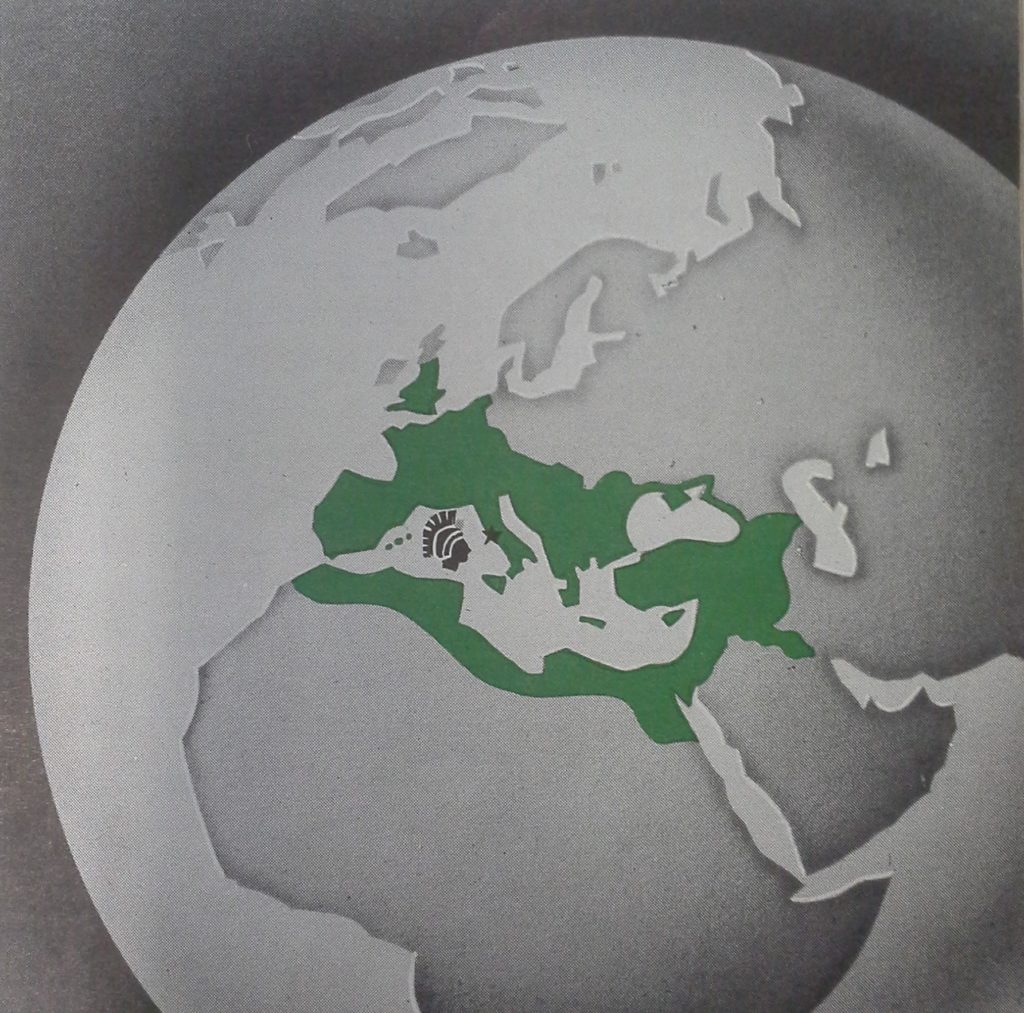
When the Roman general who lost the battle returns with a handful of soldiers, he is not criticized. Instead, the Senate praises him for not giving up hope of saving the state.
The confidence of the Senate was justified. Fifteen years later, it was Carthage and not Home that was conquered. In this crisis you see the Romans showing qualities which made them great: courage in the face of danger, loyalty to their city, determination to fight on to victory.
(2) The year is 107 A.D. It is a Roman holiday. The Emperor has proclaimed a series of public entertainments to last for 123 days to celebrate the victorious end of a two year war. Today the celebrations have begun. We join the huge crowd that jams Rome’s great Colosseum. Now the Emperor has come in and taken his seat in the imperial box just above the arena. All classes of Roman society are to be seen in the audience: senators, high government officials, shopkeepers, laborers, paupers. The majority are men. Just a few women occupy the seats reserved for them in the top rows.

In marched the gladiators, that is, captives or slaves trained to fight with different kinds of deadly weapons. They halt and face the Emperor. Raising their right hands, they hail him with the cry, “We who are about to die, salute you.” Then they disperse, each to await his call to fight. Most of the events on the day’s program are duels between pairs of gladiators. There comes the finish of one! After a hard fight, one gladiator has fallen wounded. Will the victor kill him? The fallen man looks to the Emperor for mercy, but the Emperor waves his hand to show that he leaves the man’s fate to the crowd. The vanquished gladiator has pleased the crowd with his skill and courage, so they applaud, wave their handkerchiefs and hold out their fists with the thumbs up. His life will be spared! If he had shown cowardice or put up a dull fight, the crowd would have jeered him and held their thumbs down. Then the victor would have finished him off.
In the 300 years between these two scenes, the stubborn, patriotic Romans had extended their rule around the Mediterranean Sea and into Europe and Asia. They had worked hard to build an empire, but the growth of power brought changes to Rome itself. More and more Romans were content to live off the labour of captive slaves and the taxes collected in conquered lands. They were not too proud to support any ambitious leader who wanted to be emperor — provided he gave them enough free food and brutal shows.
To understand how the Roman Republic became a rich and mighty empire, we shall seek answers to these questions:
1. How did the Roman people create a strong state?
2. How did the Roman Empire develop?
3. What was life like in the days of the Roman Empire?
1. How Did the Roman People Create a Strong State?
Rome occupied a favourable position in the Mediterranean world. Rome’s story began in the Italian peninsula. A glance at the map will show that the Italian peninsula is shaped like a cowboy’s high heeled boot. To the south it juts far into the Mediterranean Sea toward the coast of North Africa. To the north it is cut off from the rest of Europe by the towering snow-capped Alps.
American soldiers who fought in Italy during World War II will tell you that mountains cover a considerable portion of the country. Running from north to south through the boot shaped region is a chain of mountains, less high than the Alps, called the Apennines. Despite these rugged mountains, however, Italy is better suited to farming and grazing than is Greece. At the foot of the Alps lies the broad, fertile valley of the Po River. There are also other stretches of level, open land, particularly between the western slopes of the Apennines and the coast. Fertile soil and the lack of good harbours caused the early peoples of Italy to turn to farming rather than to commerce.
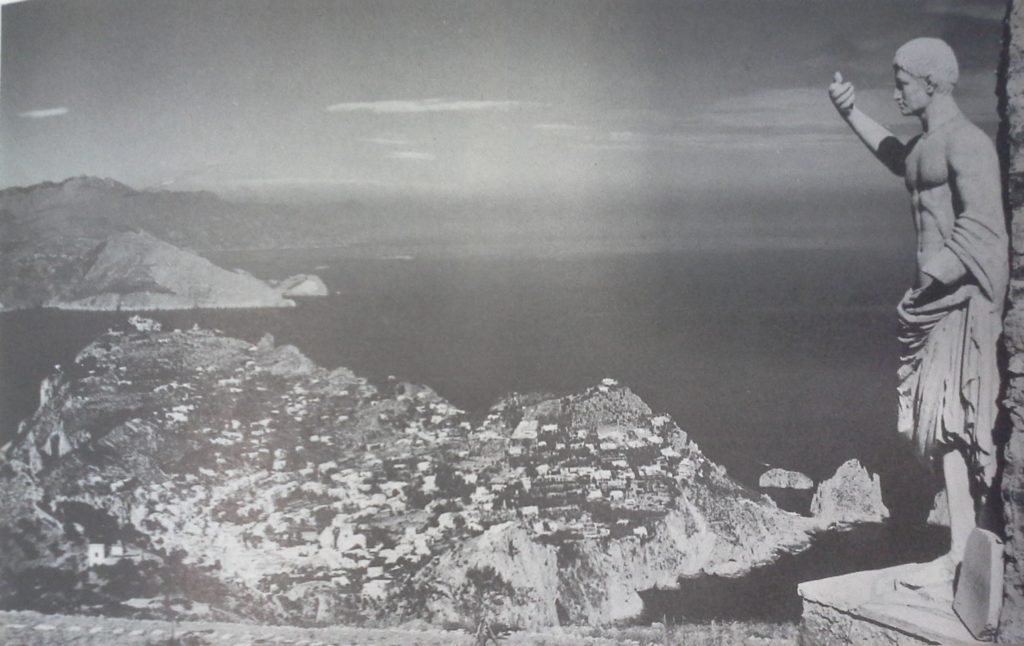
Location and geography favoured Rome’s growth and expansion. From its central position, the military forces of Rome could easily advance north, south and east to all parts of the Italian peninsula. The people who conquered Italy were well situated to rule even more land. They could reach north and west to what are now France and Spain, southward into Africa, eastward into Greece, Asia Minor and the rest of the Near East. In other words, the city of Rome was so situated that it could become the hub of a vast wheel whose spokes reached to the rim of the Mediterranean world.
Rome’s beginnings were obscure. Nobody knows when and by whom Rome was first settled. Small villages grew up on a group of hills on the south bank of the winding Tiber River about 15 miles from the sea. North and south of the settlements were open plains. Inland to the east were the Apennines. Most of the early inhabitants of these settlements were Latins, descendants of tribes which had invaded Italy from the north.
The villages were united into a city under the Etruscans. The Etruscans were a civilized but warlike people to the north, who for some time ruled Rome and other Latin cities. From their Etruscan conquerors the Romans learned more advanced ways of living as well as military skills. The Etruscan kings also improved the city of Rome by building a wall around it and draining the low lands between the hills. By 500 B.C., however, the Romans had succeeded in freeing themselves from Etruscan rule. They had also gained control over some smaller Latin cities.
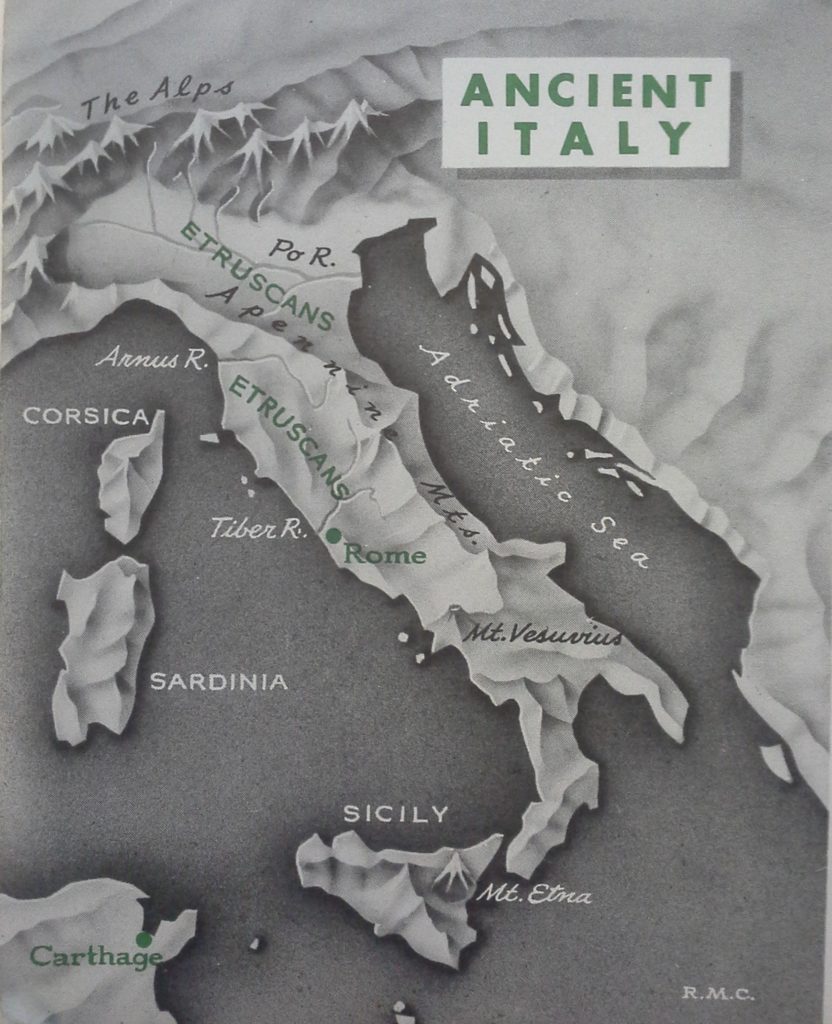
Rome became a republic dominated by a privileged few. At the time it became free of the Etruscans, Rome ceased to be ruled by kings. Outwardly Rome became a republic, that is, a government in which elected officials were responsible to the people. At the head of the state were two officers, called consuls, who were elected for a term of one year. Actually, however, the control of the government fell into the hands of a small class of influential land owners called patricians. Only men of patrician families could become consuls or hold other positions in the government. Furthermore, only patricians could be members of the Roman Senate. This body, composed at first of 300 members, was appointed for life. The Senate in theory merely advised the elected officials, but in fact controlled the important affairs of the state. You can see, therefore, that Rome was ruled by a group of prominent landowners who came to be regarded as the “best people.” Such a government is an aristocracy.
The great mass of common people, called plebeians (pleh bee’unz), had few rights and many grievances. They could take part in an Assembly, but this body had only limited powers. M easures passed by the Assembly, for example, could be rejected by the Senate. Moreover, plebe ians were not allowed to marry patricians.
The plebeians succeeded in bettering their condition. Over a period of about 200 years the plebeians struggled to obtain a greater degree of equality with the patricians. In this struggle they were successful. (1) They gained the right to elect officers of their own, called tribunes, who were to give aid to anyone treated unjustly. (2) They succeeded in getting laws written down in a code and published. This code was known as the Twelve Tables because the laws were written on twelve boards or tablets. (3) The pleheians gained all the privileges hitherto enjoyed only by patricians. Members of the two classes were no longer forbidden to intermarry. Plebeians could hold office and become members of the Senate. (4) Finally, laws passed by the Assembly could no longer be vetoed or overruled by the Senate.
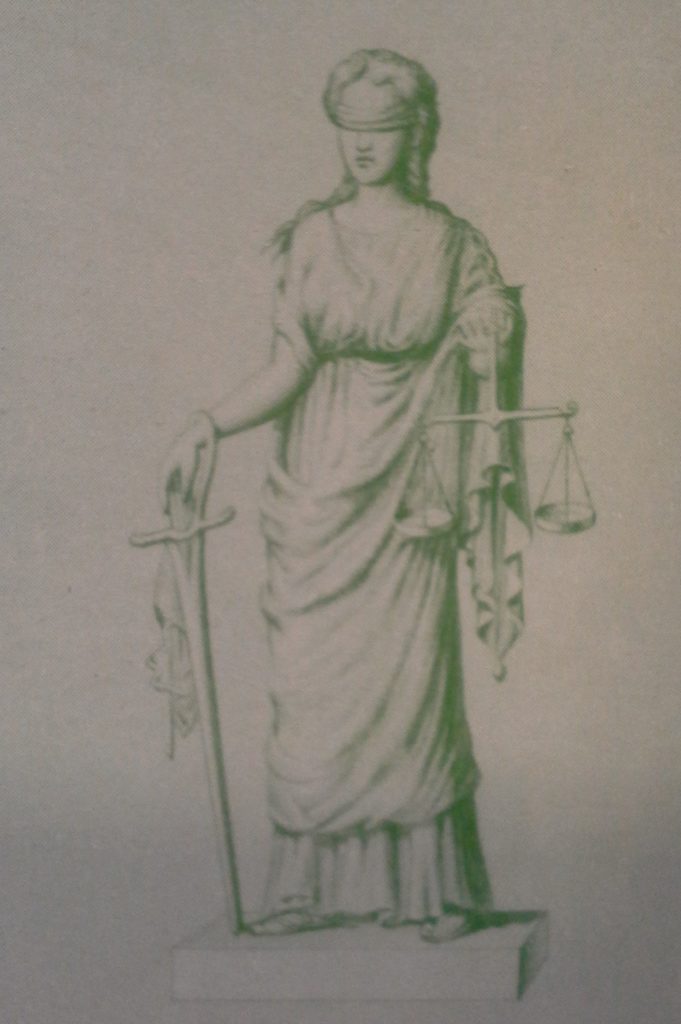
The Twelve Tables
If a man call another to law, he must go. If he go not, they shall witness it; then he shall be seized. . . . If they settle the matter out of court, let it be announced. . . . If they settle not, they shall argue the case in the assembly or in the forum before midday; then they shall plead and prove, both being present. . . . He who needs a witness shall within three days go to his house and notify him. . . . When a contract or transfer is made, what the tongue has pronounced, the law shall enforce. . . . The owner shall wall the highway next to his land. If the stone work falls into disrepair, the traveler may drive his team where he will. . . . If by night a man have done a theft and the owner kills him, let the man be as if killed by law.
The Roman Republic was not thoroughly democratic. By about 300 B.C., therefore, patricians and plebeians had the same rights, so that the rivalry between these two classes disappeared. Rome, however, did not become a full democracy. A new senatorial class arose, which included many wealthy plebeians who had become officeholders and members of the Senate. Ambitious to retain their position, these new members of the Senate found ways and means to keep themselves and their families in office. Though the people possessed more rights, the senatorial class grew steadily more powerful and ruled the state as completely as had the old patrician group. Rome was still an aristocracy.
Rome conquered the rest of Italy. During about the same period (500 to 265 B.C.) Rome brought the rest of Italy under its control. This goal was not achieved easily; it meant stubborn, bitter fighting, with setbacks as well as victories, but Rome was victorious in the end for two reasons: (1) It developed a powerful military machine and (2) it followed a shrewd and farseeing policy toward both its friends and those it conquered.
The Roman army was efficiently organized. Every Roman citizen was expected to give military service. These hardy farmers made first class infantry men, capable of marching 30 or more miles a day and carrying 60 pound packs. Each night they built a camp laid out in regular streets and protected by a deep trench and a high wall. (Notice their helmets and light body armour in the picture.) In battle, when they neared their enemies, the Romans hurled their spears. These had long points of soft iron which bent when they struck, so the enemy could not pick them up and hurl them back. Most effective of a Roman soldier’s weapons, however was his murderous short sword, designed for close hand-to-hand fighting.
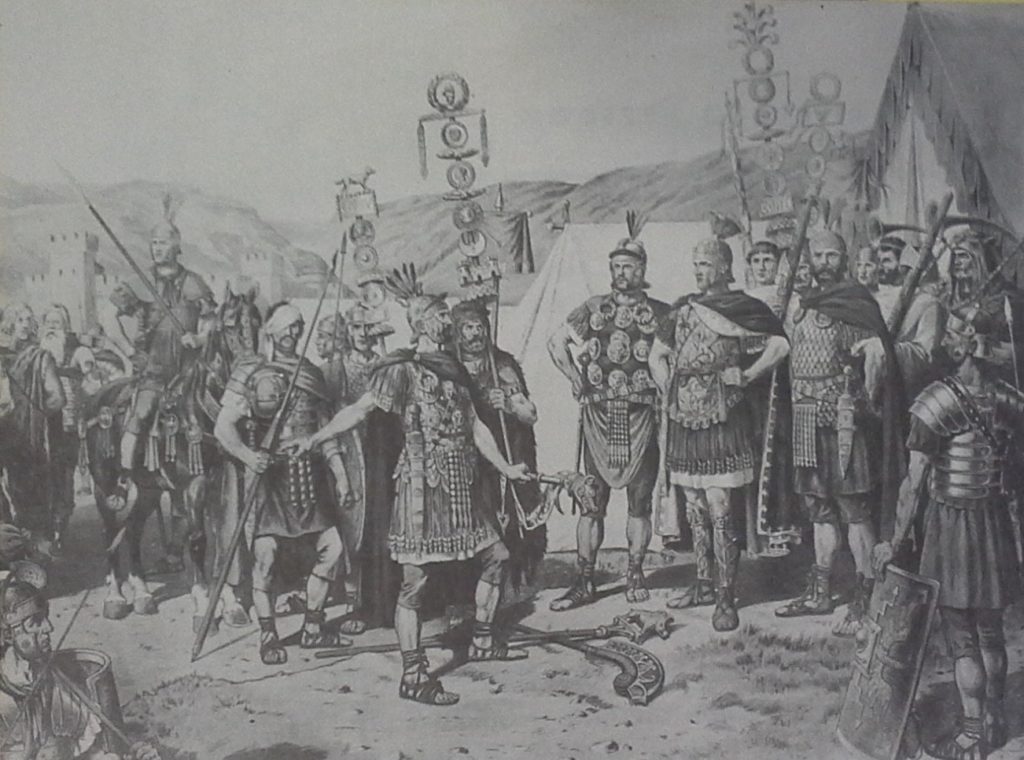
The key unit in the Roman army was the legion, made up of from 3000 to 6000 men. Legions were divided into groups called centuries (originally 100 men) and led by centurions. Cavalry detachments of about 300 horse men were assigned to each legion. In command of the army was one of the two Roman consuls. During times of great danger, however, the command was turned over to a dictator chosen by the consuls. The dictator had absolute power for not more than six months. At the end of that time he had to appear before the Roman Senate and justify what he had done. So deep was the Roman respect for law that in the days of the Republic no dictator failed to follow this practice.
Roman soldiers were subject to strong discipline. Roman soldiers not only were well trained and well equipped, but were also well disciplined. A Greek writer thus described the discipline of the Roman army. A soldier who left his post unguarded was tried by the commander of the legion. If the soldier was found guilty, the commander, “taking a small rod, simply touches the criminal; and immediately all the soldiers fall upon him with blows from sticks and stones. . . . If he does not die, he remains marked with shame and no relative or friend . . . would dare to open his house to him. . . . The same punishment is inflicted on those who steal in the camp, who give false witness, or have been caught three times in the same fault. There are also marks of shame for anyone who boasts falsely . . . of an exploit. . . or throws away his arms during battle.”
The same writer who described these punishments also told how bravery was rewarded. The first man, for instance, to gain a foothold on the walls of a city and beat back its defenders received a gold crown after the victory. Others who showed unusual bravery in battle were complimented by the commander while the legion stood at attention.
Rome showed wisdom in dealing with allies and enemies in Italy. A farsighted, threefold policy toward non-Roman peoples, as well as the strength of its legions, helped Rome to bring Italy under control. (I) Alliances were formed with tribes that were threatened by the same enemy as Rome. Such allies were treated generously, but Rome held them strictly to the terms of their treaty. Once a Roman ally, always a Roman ally. (2) Rome carried out the conquest of Italy in a piecemeal fashion. In other words, the Romans did not bite off more than they could chew at any one time. (3) Rome did not hold its defeated rivals as conquered subjects. As each new section of Italy was conquered, many Roman rights and privileges were granted to its people. Rome even founded colonies of citizens and allies in newly acquired regions. By dividing and conquering and then “Romanizing’ their enemies, the Romans were able to bring all Italy under their sway.
Carthage threatened the rising power of Rome. Control of Italy increased Rome’s trade, wealth and power, but it also brought Rome into conflict with Carthage. This city in North Africa had been founded as a colony by the Phoenicians. In time, Carthage had built up a powerful empire in North Africa and Spain and among the islands of the western Mediterranean. Energetic merchants from Carthage controlled the trade westward from Sicily and constantly pressed for new markets. When the Carthaginians threatened to control the narrow strait between Sicily and the southern tip of Italy, war broke out between the two rival cities.
Rome finally crushed and destroyed Carthage. In all, Rome and Carthage fought three bitter and destructive wars. In the first, which began in 264 B.C. and lasted for 23 years, Rome was the victor. This triumph, however, cost Rome dearly in wealth and manpower. Not until the Romans had developed a big navy were they able to inflict a crushing defeat upon Carthage. As a result of this war, Carthage lost control of the sea and was forced to give up Sicily.
One of the most daring military campaigns in all history was fought in the second war between Rome and Carthage. In Spain, a brilliant Carthaginian general named Hannibal gathered about 40,000 foot soldiers and horsemen. This young leader, still in his twenties, planned to carry the war to Rome’s very doorstep. Over the forbidding Pyrenees Mountains and the Alps -through snow and over ice and along treacherous paths toiled Hannibal’s men, accompanied by their horses and Iumbering elephants. Many of the Carthaginians perished as a result of the difficult journey. What was left was a force of some 26,000 tough, hardy fighting men and down into the Po valley they marched.
Hannibal remained in Italy about fifteen years. Although he defeated the Roman armies in many battles, he could not force them to make peace. Now the wisdom of Rome’s policy toward its Italian allies was proved. Instead of coming to his aid as Hannibal had expected, the Italians generally remained loyal to Rome. At length the threat of a Roman attack on Carthage itself forced Hannibal to return to Africa. He was badly defeated at the battle of Zama in Africa in 202 B.C. Carthage lost its empire and the Romans seized Spain, but they never forgot or forgave their new helpless rival. In a third, brief war which ended in 146 B,C., the Romans utterly destroyed the city of Carthage, tearing down its walls and burning it to the ground.
Roman power reached in all directions. The long drawn-out struggle with Carthage forced Rome to become a power on the seas as well as on land. It also brought under Roman control the areas formerly held by Carthage in North Africa and Spain, as well as the islands of Corsica, Sardinia and Sicily. Meanwhile Roman legions had taken over Greece, Macedonia and Asia Minor. By 133 B.C., therefore, Rome was mistress of most of the Mediterranean world, but Roman expansion was far from ended. Under ambitious generals, Roman armies continued to extend further the frontiers of the Roman world.
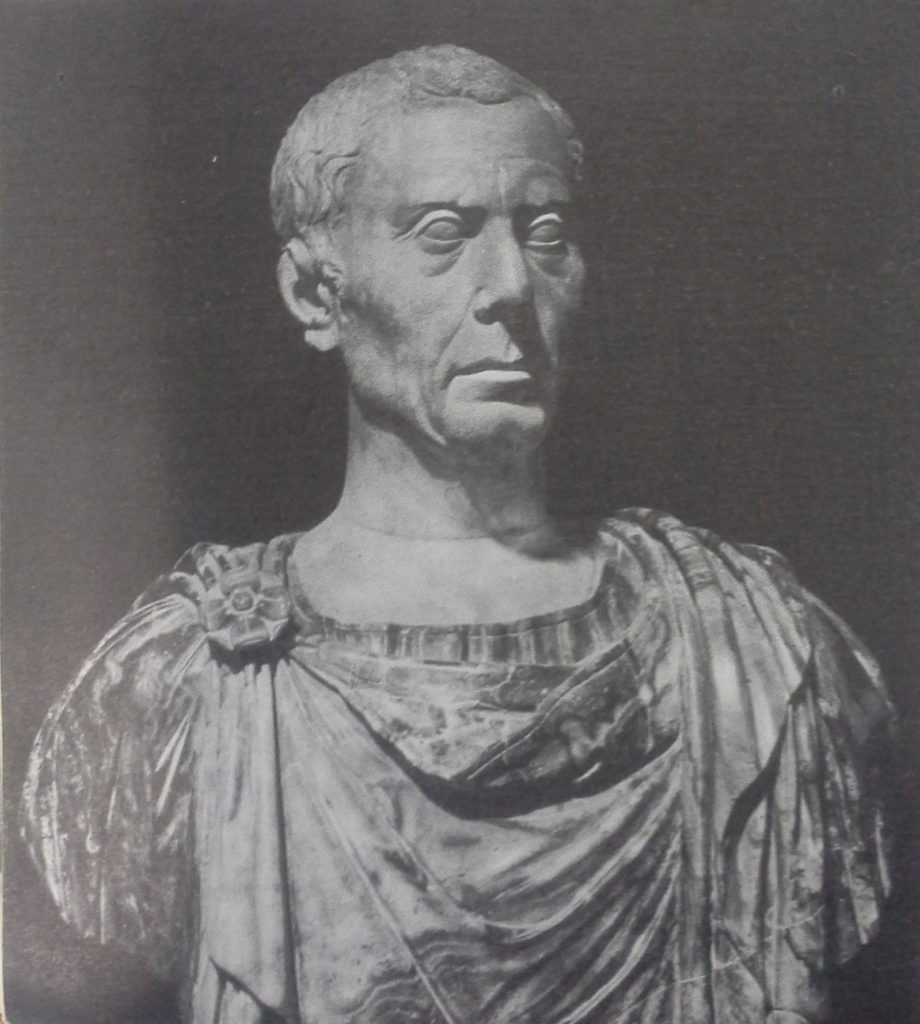
The Romans drew great profits from their provinces. Outside of Italy, the Romans treated conquered peoples as subjects, not as allies. As each country was annexed, it was organized as a province under a governor appointed by the Roman Senate. The people in the provinces were obliged to pay heavy taxes to Rome. In addition, they were required to give aid to Rome in time of war.
In many ways, to be sure, the Romans treated the people in the provinces fairly. Like the old Persian rulers, the Romans allowed the conquered people to keep their own languages, laws, religions and forms of local government. The Roman method of tax collection caused much hardship in the provinces. Roman governors often used their almost unlimited power to enrich themselves. Roman tax collectors often collected more in taxes than they turned in to the treasury. Roman bankers and moneylenders made immense profits in the provinces.
Such methods brought wealth to Rome but created want in the provinces. In time almost all the expenses of the Roman government came to be paid out of these taxes paid by the provinces.
2. How Did the Roman Empire Develop?
The spread of Roman power abroad brought changes at home. The continual warfare by which Rome gained great possessions across the seas bred rivalry and discontent at home. Emergencies some times arose when quick decisions were necessary. Since the popular assembly did not meet regularly, the Senate more and more took over the handling of public affairs. Members of the senatorial class grew ever richer and more powerful. With the wealth which they gained from positions held in the provinces, senators bought up great tracts of land at home. Throughout Italy large estates, worked by gangs of slaves, replaced small farms, owned and tilled by citizen-farmers.
While senators, as well as a rising class of prosperous businessmen, were living in luxury, the citizen soldiers who did most of Rome’s fighting were growing poorer. They came back from the wars to find their farms ruined by roving armies or sold because they had not paid their debts. They could find no work on the big estates, for that was done by slaves — former prisoners they had helped to capture! Said one man who tried to help these landless and jobless ex-soldiers and their families: “The savage beasts in Italy have their . . . dens, they have their places of repose and refuge; but the men who bear arms and expose their lives for the safety of their country . . . wander from place to place with their wives and children.”
Clashes arose between classes in Rome. The man who spoke these words was Tiberius Gracchus. Although he belonged to the senatorial class, Tiberius Gracchus felt that something must be done to help the common people. He started a program of reform, but political enemies murdered him. His brother Gaius Cracchus also lost his life in a vain struggle to break the power of the senatorial class. The leaders of that class were chiefly interested in gaining advantages for themselves. They blocked reforms to aid the landless and jobless citizens and refused to meet the demands of the new class of businessmen for more power in the government.
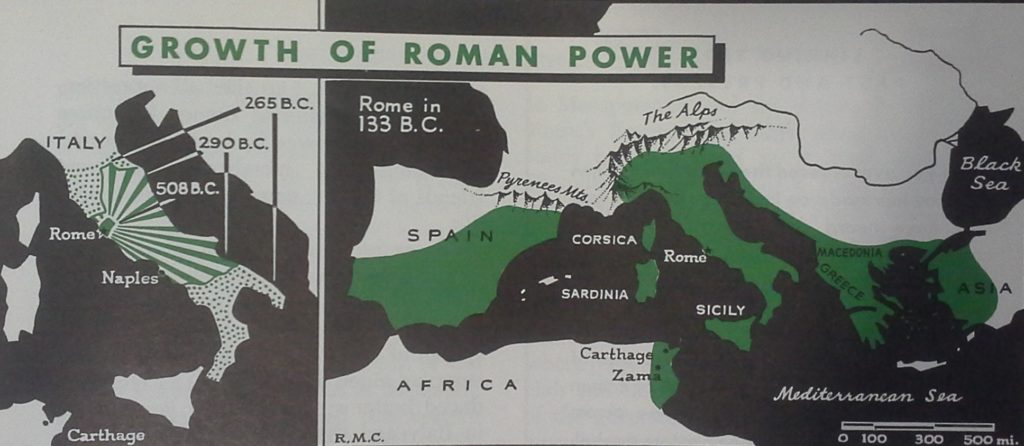
The result was nearly a century of civil war (133-48 B.C.), during which leaders of the senatorial party and the people’s party competed for control of the government. On each side, more and more of the leaders were ambitious generals, backed by soldiers who looked to them for pay, bonuses and land grants. Trickery, bribery and wholesale murder became rungs on the ladder to political power. The most successful of all these ambitious men was a leader of the people’s party named Julius Caesar.
Caesar established one-man rule in Rome. Caesar possessed both unusual ability and unlimited ambition. His family, although noble, was not rich, so he borrowed heavily and by lavish spending won the support of the Roman mob made up of the unemployed and of others looking for a “handout.” In time he became consul, but political power was not enough for Caesar. He still lacked the military reputation and the veterans’ backing enjoyed by his chief rivals. Caesar, therefore, had himself put in command of the military forces in North Italy and the part of Gaul belonging to Rome (now southern France ). After nine years of hard and ruthless fighting, he won for Romes the rest of Gaul (the remainder of present day France, together with Belgium). He also invaded Britain twice. Caesar now had his own army of loyal soldiers, as well as support among the lower classes in Rome. He hoped to return to Rome and become the leading figure in public life.
Alas, the leaders of the Senate hated and feared Caesar. They determined to destroy him with the help of his chief rival, Pompey. The Senate declared Caesar a public enemy and in reply he marched his troops into Italy. He then occupied Rome and in a series of campaigns (49-45 B.C.) crushed all opposition. Now he was master of Rome. Meantime the Senate, overawed by his successes and containing new members who were friends of Caesar, named him dictator for life.
Caesar introduced needed reforms. Caesar’s one man rule ended self-government in Rome, but it enabled him to do certain worth while things. (1) He improved the system of tax collecting in the provinces, stopping much of the graft. (2) He introduced better systems of city government in Italy and the western provinces. (3) He made it easy for inhabitants of the provinces to become Roman citizens. He even admitted Gauls and Spaniards to the Senate. (4) Caesar also made arrangements to care for Roman veterans and some of the poor people of the city of Rome by settling them on land in the provinces. (5) He introduced a new calendar, which gave way to our present calendar 1500 years later.
Caesar’s death did not restore the Republic. Had Caesar lived longer, he might have brought about reforms of even more lasting value. There were signs that Caesar desired to become king or even to be worshiped as a god. So men who felt they were patriots and protectors of Roman liberty murdered him in 44 B.C.
Caesar’s death added to the confusion of the times. For a while power was wielded by three men, who soon quarreled. By 30 B.C. one of the three, Caesar’s grandnephew Octavian, had defeated his rivals for the powers exercised by Julius Caesar. Better known as Augustus, Octavian became the first emperor of Rome. The Roman Republic was gone. In its place there was the Roman Empire.
Rome developed into a mighty empire. For the next few centuries Rome was the most powerful of ancient empires. In many parts of Europe, North Africa and Southwest Asia, travelers today are likely to see evidence of Rome’s prosperity and influence. There are ruins of once flourishing cities. There are remains of massive bridges, stadiums, temples and aqueducts for carrying water, all built by Roman engineers and architects. Key highways today often follow roads first built by Roman soldiers; Italy and the city of Rome itself are of course full of reminders of Rome’s one time greatness.
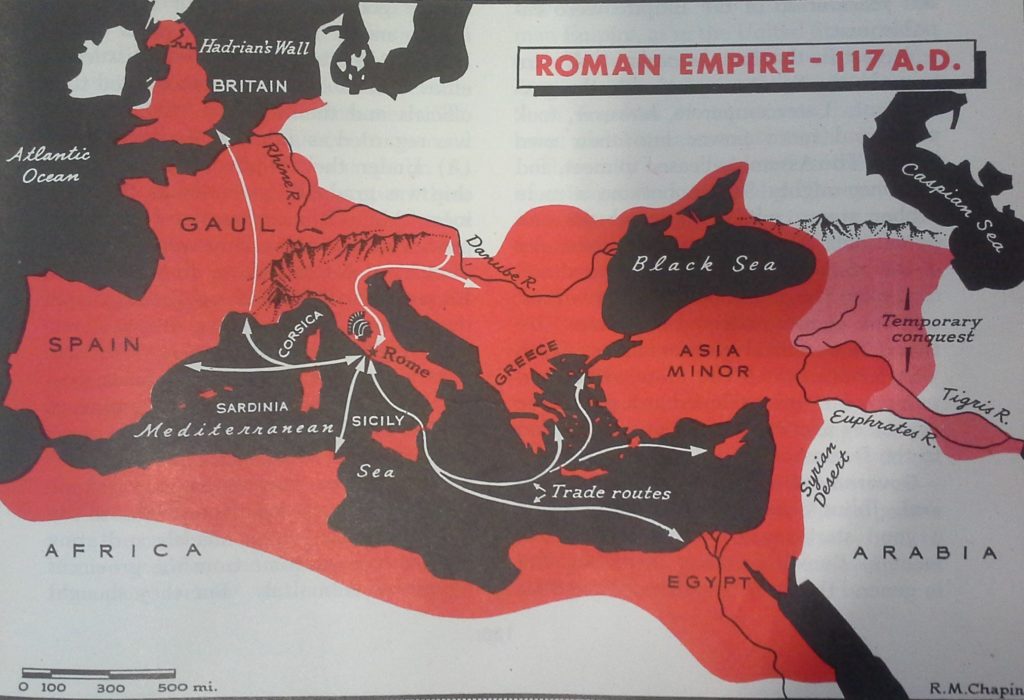
If you will glance at the map, you will see the vast extent of the Roman Empire when it was at its height. The Atlantic Ocean formed the western boundary, although England and southern Scotland were also Roman. Its northern boundary roughly followed the Rhine and Danube Rivers but included modern Hungary and Romania. South of the Mediterranean the deserts of Africa formed the natural boundaries of the Empire. In the east, the Empire reached Mesopotamia and the Syrian Desert. Rome’s Empire was larger than all of the United States combined and in it lived about 60 million people.
Rome was the centre of all activities. During the years that Rome was the capital city, it was truly the hub of the Empire. In Rome the emperors had their palaces. In Rome also were the buildings where records were stored and where officials and clerks carried on the machinery of the government. It was in Rome that government policies were determined and the collection of taxes was supervised.
Rome developed a strong government for its empire. The head of all this bustling government was the emperor himself. In theory, the emperors did not inherit their all powerful positions but were elected by the Senate. In practice, however, the senators usually “elected” as their new emperor the man picked by the old emperor before he died. Sometimes the army chose the man it wanted and forced the Senate to elect him. With a few exceptions Rome’s emperors during the first 200 years or so of the Empire were capable men.
Augustus, the first emperor, took care to make the Senate a partner in the government. Later emperors, however, took more and more power into their own hands. The Assembly ceased to meet and the once mighty Senate became a mere rubber stamp which approved the emperor’s acts. The emperor was commander of the army and navy. He appointed and controlled the governors of the provinces and his agents collected the taxes. He issued the official proclamations which were really laws. The all powerful emperor was even worshiped as a god in the provinces as a mark of loyalty to him and to the Roman state.
Government in the provinces was liberal. Julius Caesar, you will recall, made a good start toward improving government in Rome’s far-flung provinces and in general the early emperors followed his example. (1) Tax collectors were strictly controlled, tyrannical governors were promptly punished and justice was fairly administered. (2) The emperors not only permitted existing cities and towns in the provinces to run their own affairs, but encouraged the building of new towns in the more thinly settled parts of the Empire. Written charters were issued to cities and each year citizens elected their officials and their council. Office-holding was regarded as a duty and a high honour. (3) Under the Empire, Roman citizenship was gradually extended to the provinces. Many Romans went to live in the provinces and citizenship was granted to discharged veterans from all parts of the Empire. Finally, in 212 A.D. practically all the people in the provinces, except slaves, were made citizens.
As a result of these wise policies, people in the provinces not only came to think well of Roman rule, but took more and more part in the government. In 98 A.D. Trajan, a Spaniard, became Rome’s emperor. Later emperors, to say nothing of many high officials and army officers, were to come from the provinces instead of from Italy. But they thought of themselves as Romans first, as did the people who lived in Greece and Gaul, in Asia Minor and Spain and elsewhere in the Empire.
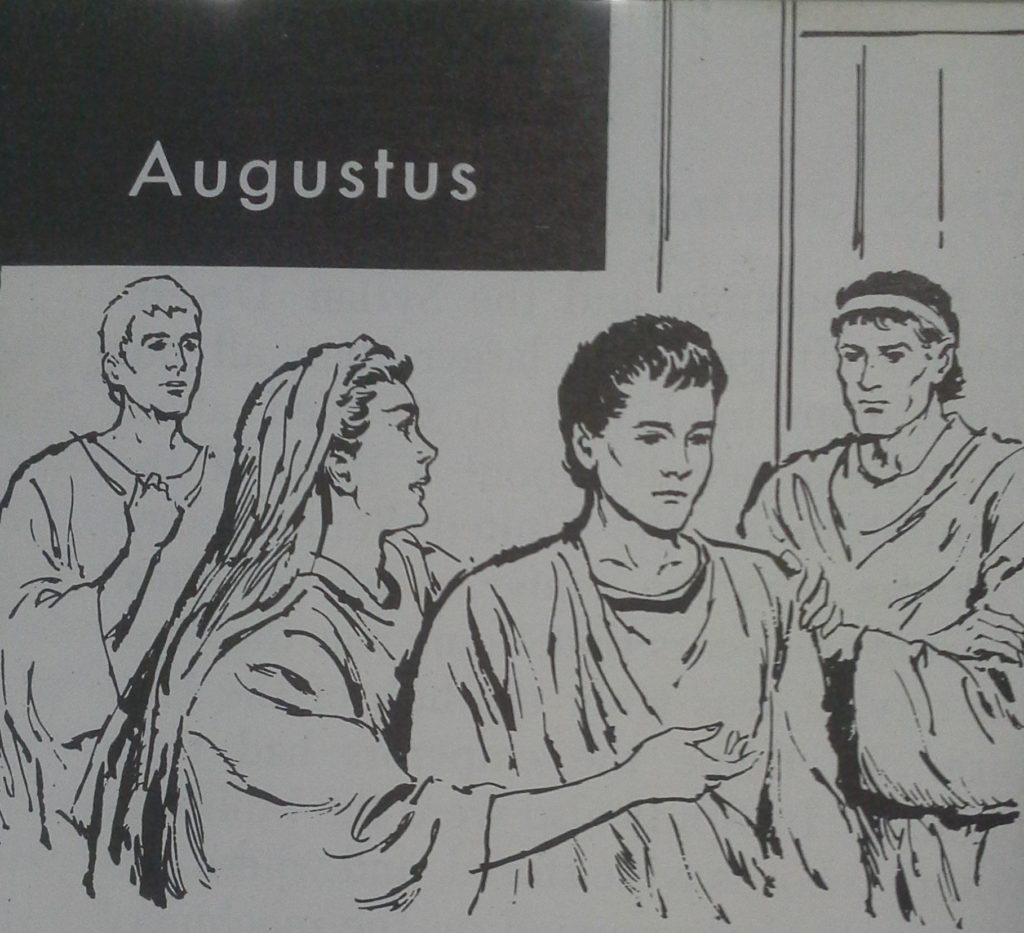
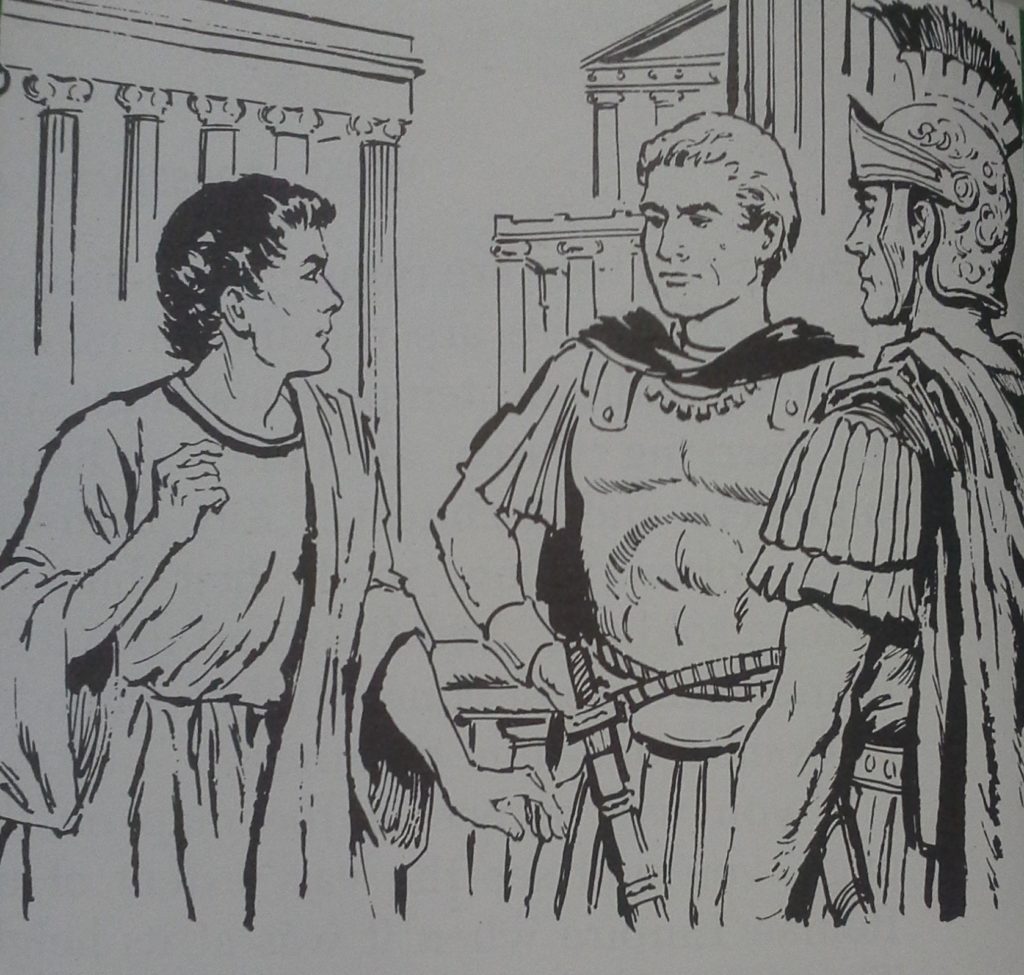
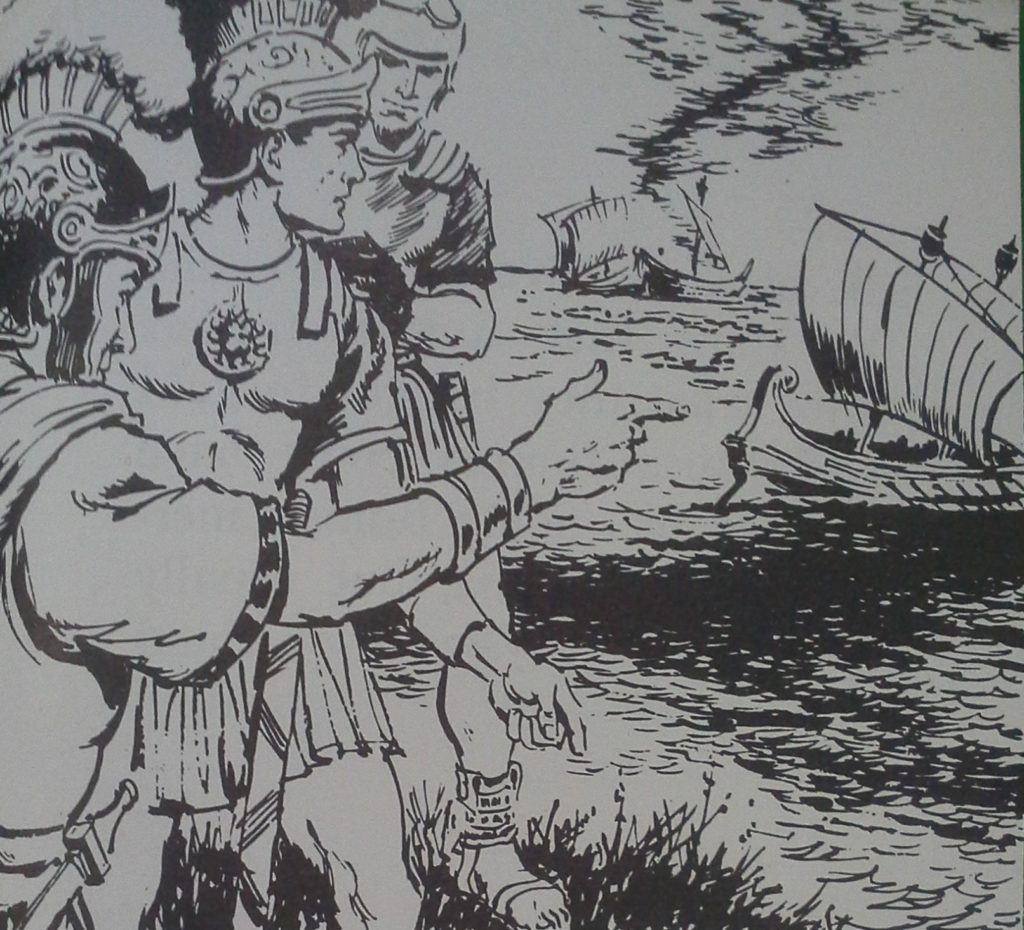
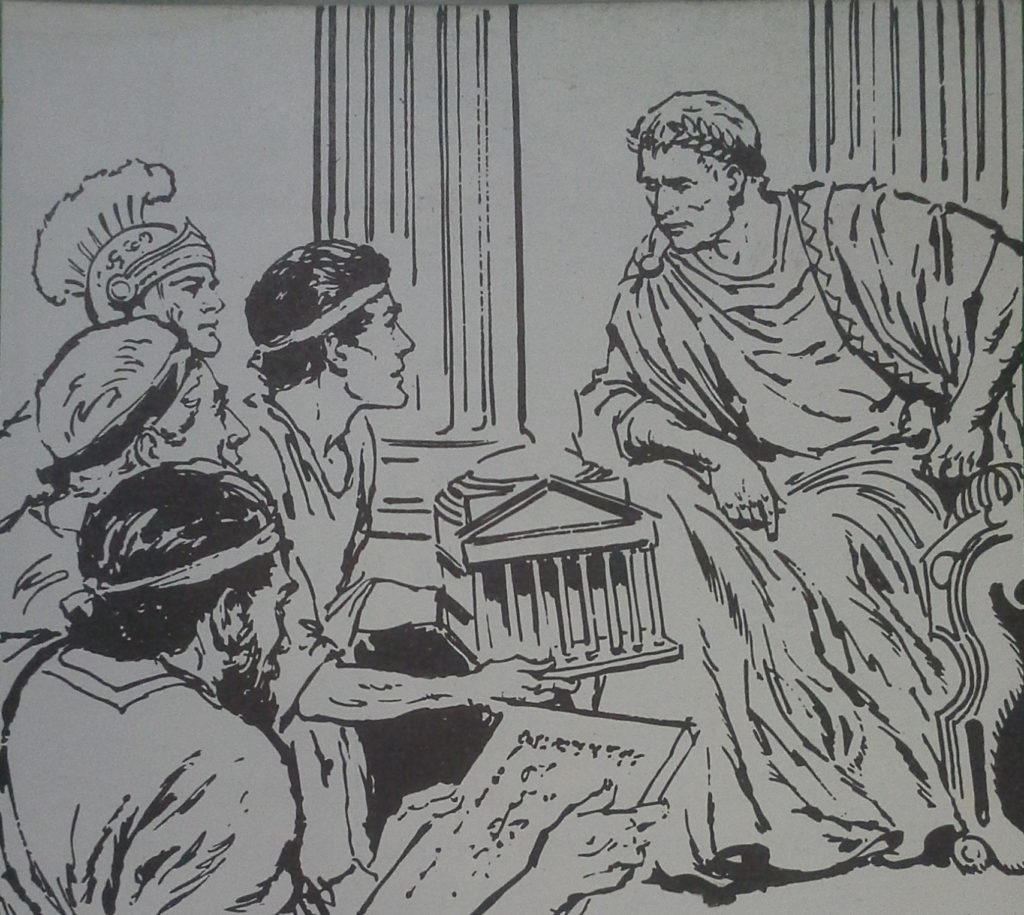
Rome’s rule brought a long period of peace and prosperity. Enemies outside of the Empire knew they had small chance against the well trained soldiers who guarded Rome’s boundaries. Pirates dared not show themselves in what had become a Roman lake — the Mediterranean Sea. Rebellions had little chance to succeed against the authority of the emperor. As a result, starting with Augustus, there was peace in almost all of the Empire for about 200 years. With peace came a high level of prosperity. To backward regions the Romans brought the benefits of a higher civilization. Forests and swamps gave way to fertile fields, new settlements and old villages grew into flourishing towns; population and wealth increased.
Men and goods moved freely within the Empire. In the ancient Roman Empire, as in the United States or Europe today, travellers and goods moved all over the Empire with few restrictions and taxes. Such freedom of movement helped to bring about greater unity in the Empire.
This unity was illustrated in the matter of coinage. In present day Europe, with its numerous countries, there are many different kinds of paper money and coins. For example, the French have their francs, the Italians their lire, the Spanish their pesetas and the English their pounds. All have different values. Not so in the old Roman Empire, of which present-day France, Italy, Spain and England were parts. Throughout the Empire except in Egypt, everybody knew what a denarius was — a Roman coin stamped with the emperor’s likeness. The use of a common system of coinage helped greatly in the buying and selling of goods.
EARLY ROME TIME-TABLE
Rule by Kings
Etruscans invaded Italy, about 800 B.C.
Rome founded (according to tradition), 753 B.C.
The Republic
The Republic established, 509 B.C.
The Twelve Tables made public, 450 B.C.
Plebeians gained rights equal to those of Patricians about 300 B.C.
The entire Italian peninsula under Roman rule, 265 B.C. Three wars with Carthage ended in destruction of that city, 264-146 B.C.
Caesar conquered Gaul, became dictator in Rome, 58-44 B.C.
Caesar’s murder led to a struggle for power, 44-30 B.C.
Augustus became the sole ruler of the Roman Empire, 30 B.C.
Traders inside and outside the Empire were busy. Trade flowed along a network of high-class highways which linked all parts of the Empire. Goods were also shipped by sea and on the larger rivers. Ships sailed between important ports on fairly fixed schedules. Much of this trade centred in Rome itself. To the capital city came products from all over the Empire — grain from Egypt and North Africa; olive oil from Greece, North Africa and Spain; cattle from Gaul and the great valley of the Danube River; wool and woolen goods from Asia Minor, Spain, Gaul and Britain; leather from Gaul, Britain and the Danube valley; gold and silver from Britain and Spain; linen, papyrus and glass from Egypt; and marble from Greece.
Roman traders visited areas outside of the Empire, too. They went into central and northern Europe for amber, furs and slaves. They went to India and Ceylon by way of the Mediterranean and the Red Sea. There in return for glassware, wine, copper, lead and tin they received linen, cotton, silk products, ivory, gems and spices. We know that Roman traders often paid for what they bought in gold and silver, because Roman coins have been found in India. Some Roman merchants even reached China, but usually goods from China came by sea or overland caravan to Roman controlled trading centres in the Near East.
3. What Was Rome like in the Days of the Roman Empire?
In the Roman Empire between 100 and 200 A.D. there were, as you have read, about 60 million people. What was the “hub” of the Empire like in those days, almost 2000 years ago?
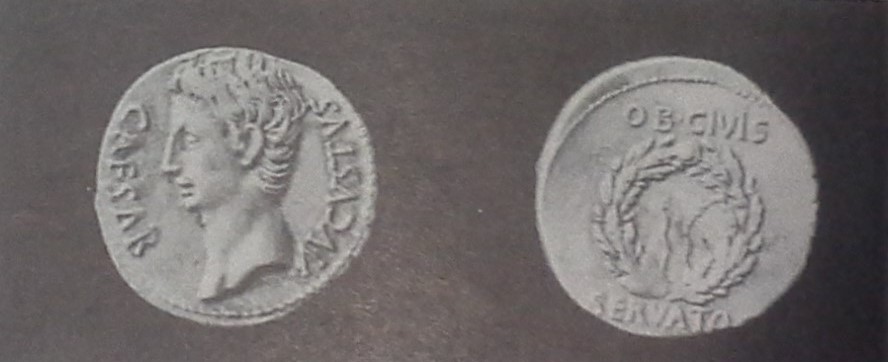
Rome was a crowded city. The only open spaces in Rome were the forums, or market places, in the heart of the city. Around these rose the seven low hills whose tops and sides were jammed with structures of concrete, or stone, or brick faced with stone. There were court buildings and temples, great public structures with marble pillars and halls of polished stone. There were marble arches and statues in honour of Roman heroes. There were the great public baths, much like modern athletic clubs. There were the beautiful homes of the rich, usually two story houses with open inside courts containing gardens and goldfish pools. There were the smaller homes of well to do merchants, lawyers, bankers, doctors. There were the slums, crowded with three and four story dirty, noisy tenements.
Stores of all kinds opened directly onto the winding paved streets, so narrow that they received little sunlight. Nor was there any street lighting. Remans who went out at night carried lanterns and kept an eye open for thugs who lurked in the dingy alleys.
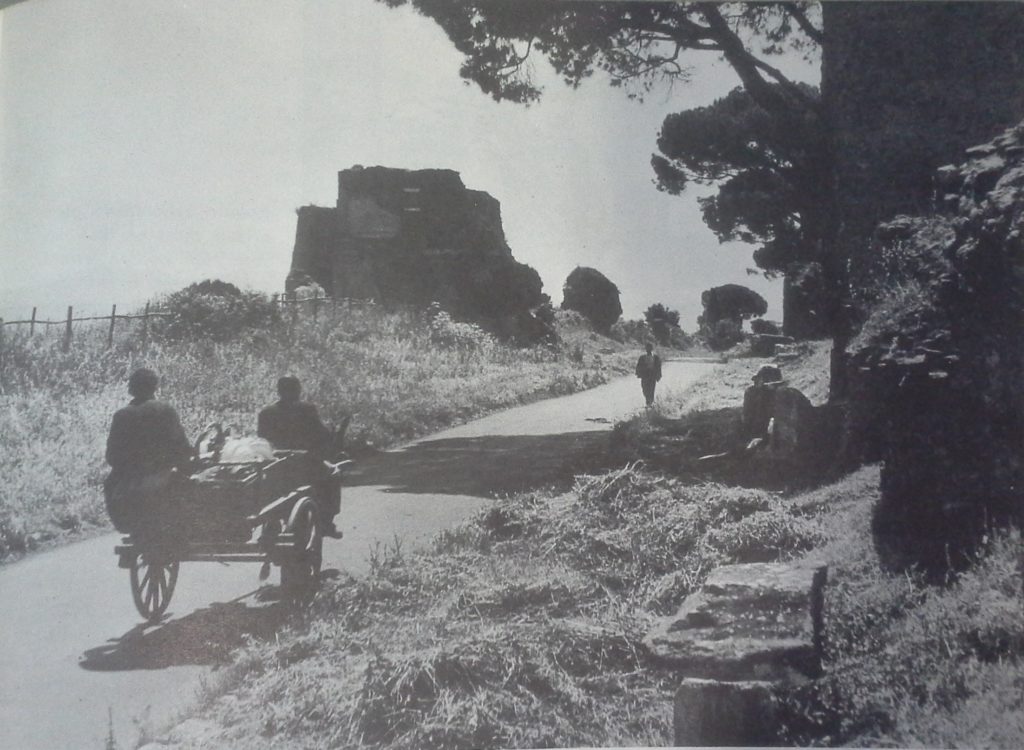
Other cities in the Empire were less splendid than the imperial city, but they had their forums surrounded by imposing public buildings and monuments, their public baths, fine homes for the rich and the slums where the poor lived.
Citizens of Rome engaged in varied occupations. The streets of Rome and its port at the Tiber’s mouth hummed with activity. To be sure, farming was still considered a more honourable occupation than trading and manufacturing; and many wealthy families, although living in luxurious homes in Rome, invested their wealth in large estates outside the city. The thriving commerce of the Empire demanded the skill and direction of many citizens. In addition to trading, there was manufacturing, carried on for the most part in small shops which sold goods directly to customers. Usually each article was turned out by a single worker. In Italy there were some industries, however, in which several specialists — such as designers, engravers, and molders –shared in the making of a single article. Workshops were not large, but sometimes one Roman might own a number of them.
There were many slaves in Rome. Between 100 and 200 A.D. probably one-third of the inhabitants of the city of Rome were slaves. The better educated and more capable were well treated. Such slaves belonged to wealthy masters; who had them teach their children and sometimes looked to them for advice in business matters. The lot of many slaves, however, was wretched. Slaves did most of the work on the large farms in Italy and Sicily; slaves also manned the workshops of Rome. There were fewer slaves in other parts of the Empire.
Those fortunate slaves who were able to earn and save money used it to buy their freedom. Others were freed by their masters without payment. Such former slaves were known as freedmen. Some freedmen became Roman citizens and although they could not hold public office their descendants could. In fact, descendants of freedmen often intermarried with old Roman families.
Slavery kept wages down and discouraged inventions. Due to so many workers in the shops being slaves, free people got the notion that shopwork was beneath their dignity. Moreover, free men working for wages could not compete with slaves working without pay. As a result, wage earners found it more and more difficult to make a living and the number of jobless workers in Rome increased. The rulers of Rome did little to wipe out these evils. Instead, they tried to overcome the discontent of the unemployed by holding free public games and entertainments and by distributing free food. “Bread and circuses” were relied upon to keep the multitude quiet.
Plentiful slave labour also slowed down technical progress. There seemed to be no need to invent laboursaving machines when slaves worked without wages. For the most part, therefore, the Romans copied Greek and Near-Eastern methods of farming and manufacturing.
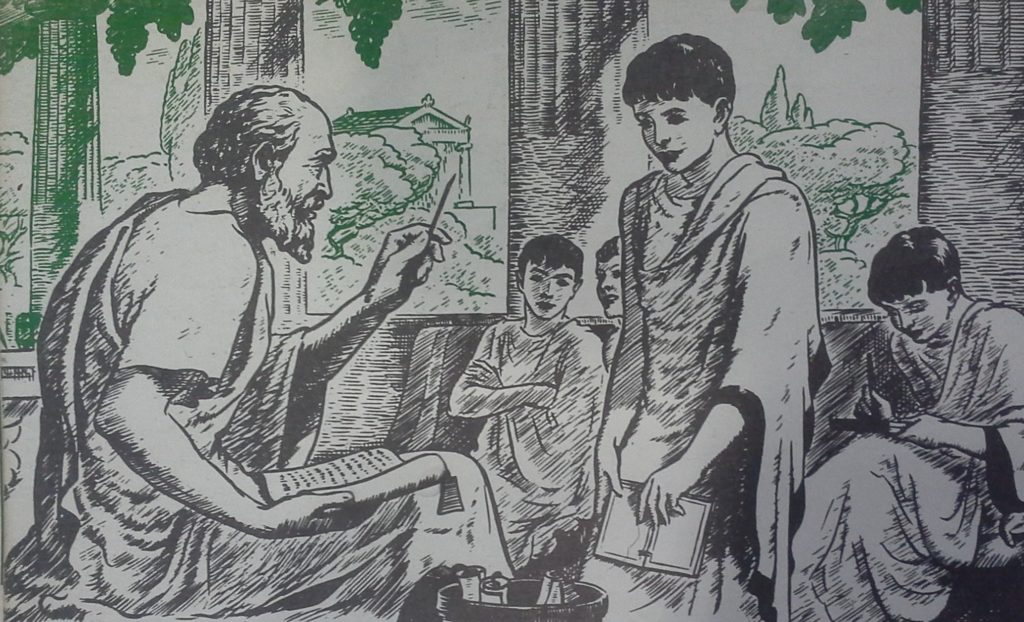
Free men lost their right to change their jobs. In time, population declined in many parts of the Empire. At the same time, slaves became fewer and more costly. Shortages of workers developed on the huge farms and in the city workshops. The Roman government therefore prepared rules and regulations to provide workers to till the soil and produce goods. About 300 A.D. it ordered that farm workers must live and work on the farms where they were born. Such workers became known as serfs in the early Middle Ages. In the same way, in an effort to maintain the flow of manufactured products, the Roman government ordered the sons of craftsmen and merchants to follow the same occupations that their fathers did.
Family life was important. The Roman family, like the Greek family, was a larger unit than modern day families. The father of the family was called paterfamilius. He had complete authority over the entire family. All family property belonged to him and he managed it for the family. At his death it was divided among the sons, who themselves became heads of families. Unlike the mothers of Greek families, Roman mothers held an honoured and influential position. Mothers and daughters took important parts in family life and led active social lives outside their homes.
In the days of the Old Republic it was the family that taught Romans to obey the law, to respect those in authority and to place the interests of the group above one’s own wishes. These high moral teachings gradually faded from Roman family life. There were many reasons for this change: (1) intermarriage of old Roman families with families in the provinces whose ideals were quite different; (2) the dying off of the old Roman population during the long wars; (3) the ever growing wealth of the upper classes which allowed them to enjoy luxuries the earlier Romans had never known.
There were no public schools in Rome. Until Rome had conquered the Mediterranean world, there were no regular schools. Roman fathers trained their sons in the use of weapons and in stern Roman ideas of right conduct. Fathers also taught sons to read and to write and enough arithmetic to keep accounts. The boys gained the rest of their education by going with their fathers to public meetings. There they listened to the discussions of questions of the day, picked up a little knowledge of law and leamed about the duties of officeholders.
By 100 A.D., however, more opportunities for formal schooling had developed in Rome. In the homes of the wealthy the children were taught by tutors. Many private schools had been established which taught the “three R’s” to boys and girls. The better schools, where most of the teachers were educated Greeks, went further. In these schools the boys (for girls seldom went on with their schooling) learned Greek, geometry, literature, music, some astronomy and debating. Wealthy young Romans often completed their studies by attending one or more of the famous schools in Greece. In time, moreover, some of the towns and cities elsewhere in the Empire provided funds for higher education.
The Romans worshiped many gods. Perhaps you have heard people speak jokingly of their household gods, meaning certain small, favourite objects in their homes. To Romans, household gods were very real spirits that possessed divine powers. These gods, they thought, had the power to protect the household from harm. In each home there was a small altar where the household gods were worshiped every day. The father of the family directed the ceremonies.
The Romans also believed in gods of the farm, who were responsible for weather and crops. Most important of all were the gods and goddesses worshiped by all the Romans. Chief among these were the sky god Jupiter, the war god Mars and the goddesses Juno and Minerva — roughly the same as the Greek Zeus, Ares, Hera and Athena.
Worship of the gods of the farm and of the greater gods such as Jupiter and Mars was conducted by Romans chosen for this duty. There were no full time priests, merely Roman citizens who conducted religious ceremonies in addition to their usual activities. Julius Caesar, for example, was for a time chief priest, with the title of Pontifex Maximus (Latin for “chief priest”). There was a small band of unmarried women who devoted their lives to keeping the sacred fire alight in the special temple dedicated to Vesta, the goddess of the hearth. These Vestals, as they were called, were held in great reverence.
The Roman religion emphasized religious ceremonies and signs. The Romans believed that each god must be worshiped in a special way, with approved prayers and offerings. Only when these ceremonies were carried out to the letter could the god’s favour be won. A single mistake would spoil the value of the whole service. The Romans also believed that flights of certain birds, the crack of thunder at certain times or the condition of the livers of sacrificed animals revealed the will of the gods. Such signs were called omens. No general would begin a battle, nor would a bride be married, unless the omens showed that the gods looked kindly upon them. Officials called augurs studied these signs and decided whether the Omens were good or bad. From the word augur we get our word inaugurate.
Roman religion did not stress personal conduct. Egyptians believed that good deeds on this earth meant a happier after life; The Hebrews had the Ten Commandments to guide their personal conduct. The Roman religion had little to do with personal behaviour. The Romans wanted their gods to give them wealth, health and victory, not to help them live good lives. Nevertheless, religion gave Romans a strong sense of duty toward the gods and toward the family, encouraging a sense of loyalty to Rome itself. It was not until after Christianity had spread widely in the Roman Empire that Romans had a religion calling for high standards of conduct.
Romans created literature modeled after Greek types. While Rome was a young city busy with foreign wars, its citizens had little time or thought to spend on literature. Conquest of the Mediterranean world brought knowledge of the civilizations of other peoples and leisure time for reading and writing. The Romans got their start in literature from the Greeks and translated Greek poems and plays into Latin. Then the Romans tried imitating Greek writings. Finally they came to write books that were thoroughly Roman in thought as well as in language.
The so-called Golden Age of Roman literature came in the closing years of the Republic and under the early emperors. Among the greatest of the Roman writers of this period was Cicero. Cicero was a fiery and effective orator, many of whose political speeches are read even today. So also are his writings on law, philosophy and religion. Julius Caesar, who lived at the same time as Cicero, was not only a general but an author. Caesar’s account of his wars in Gaul is still studied today by students of Latin. It is written clearly, simply and is also excellent military history. Another great Roman historian was Livy, who wrote an account of the history of Rome from its beginnings to the early years of the Empire.
The most famous and greatest of the Roman poets was Virgil. His long poem, the Aeneid, tells the fanciful story of a man who escaped from the burning city of Troy and wandered to Italy, where one of his descendants founded the city of Rome. Like the Iliad and Odyssey, the Aeneid ranks high in the world’s great literature. Another poet was Horace, famed for the beauty and wit of his poetry and for his understanding of human nature.
Not all literature in Roman times, however, was in Latin. In the eastern portions of the Roman Empire, people kept their Greek speech. Among the many authors who wrote in Greek was Plutarch, whose Lives of famous Greeks and Romans are still read with interest. The chief writings in the field of medicine were the work of Galen, a noted doctor from Asia Minor who spent much time as court physician in Rome.
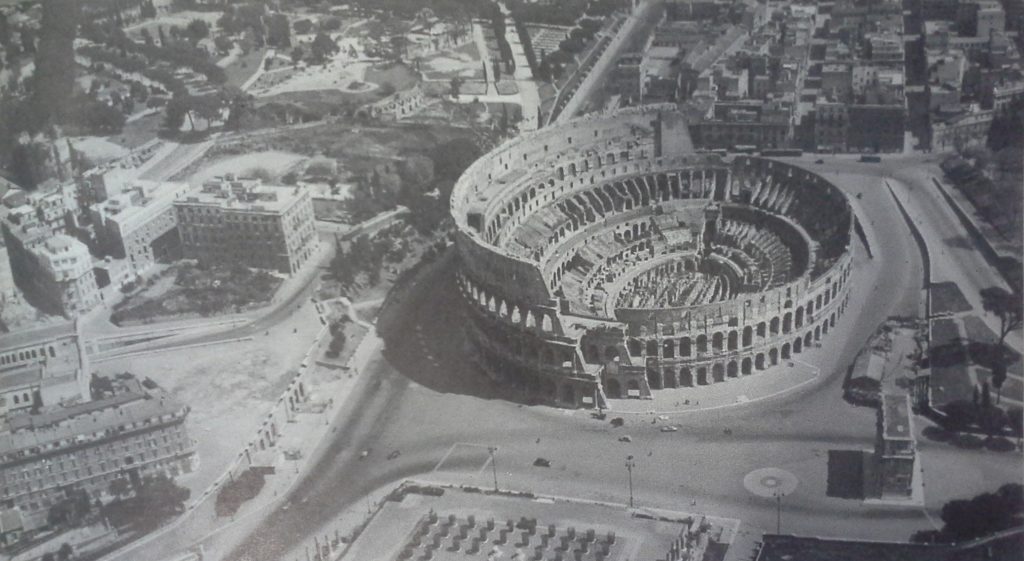
The Roman language, Latin, influences today’s world. Long after Rome’s rule was ended, the Latin language continued in wide use. For centuries, for example, it was the language of law, government and education in western Europe. Until the 1600’s it was also the language used by statesmen of one country in dealing with statesmen of other countries. From Latin are descended the so called Romance, or Romanic (meaning “from Roman”), languages of today — Italian, French, Spanish, Portuguese and Romanian. The European countries where Romance languages are now spoken were once part of the Roman Empire.
To this day, of course, considerable Latin and some Greek are used by doctors in writing prescriptions. Lawyers and scientists use Latin. Latin was and still is used in the Roman Catholic Church. Moreover, the roots of many English words come from Latin.
ln art, as well as literature, the Romans owed much to the Greeks. The early Romans paid little attention to art, but from the Greeks and other conquered peoples they learned to appreciate sculpture and painting. Many famous Greek works of art were brought to Rome as spoils of war. In fact, many wealthy Romans became collectors of Greek art and furnished their homes with Greek statuary, pottery and silverware. In time, Roman sculptors learned to carve lifelike statues of prominent people.
Romans were great builders. In building and engineering, the Romans proved unusually skillful. There was a vast network of roads that bound the Roman Empire together. Along these well drained highways paved with stone blocks moved all sorts of travellers — government messengers, troops, merchants with their wagons or pack animals, the wealthy in their carriages, the humble folk on foot. Not until automobiles came into use in our times were equally good roads built. These Roman highways crossed rivers on stone bridges whose arches rested on stone piers sunk deep into the river beds.
Athens had beautiful public buildings but did not have a good public water supply. Rome had both. From streams high in the hills, pure water reached all parts of the city by means of a magnificent system of aqueducts. Pillars and arches of stone carried the aqueducts over Valleys and plains. Tunnels channeled the water through hills and into the city. There the water was piped into homes and public buildings, though tenement dwellers usually had to carry water from street corner outlets. Some of the many aqueducts built in various parts of the Roman Empire supply water to cities to this day.
When you think of Rome, however, you are more likely to think of chariot races and gladiators than of aqueducts. To make it possible for spectators to enjoy the thrilling races, the Romans built a great race track with a grandstand of stone surrounding it. This was the Circus Maximus, which seated over 150,000 people. (The Indianapolis Motor Speedway seats 80,000 people.) Interest in chariot races was keen throughout the long time span of the Empire, both in Rome and elsewhere. Onlookers took sides according to the colours worn by their favourite charioteers. Rivalry between the Blues and the Greens, for example, was so in tense that it often led to blows.
The Colosseum, where gladiators fought in the sandy arena, was an oval-shaped structure four stories high. Modern stadiums have much the same arrangements of entrances, aisles and seats as had the Colosseum. About 70,000 Romans could crowd into it. (The Rose Bowl in California holds 100,000 people)
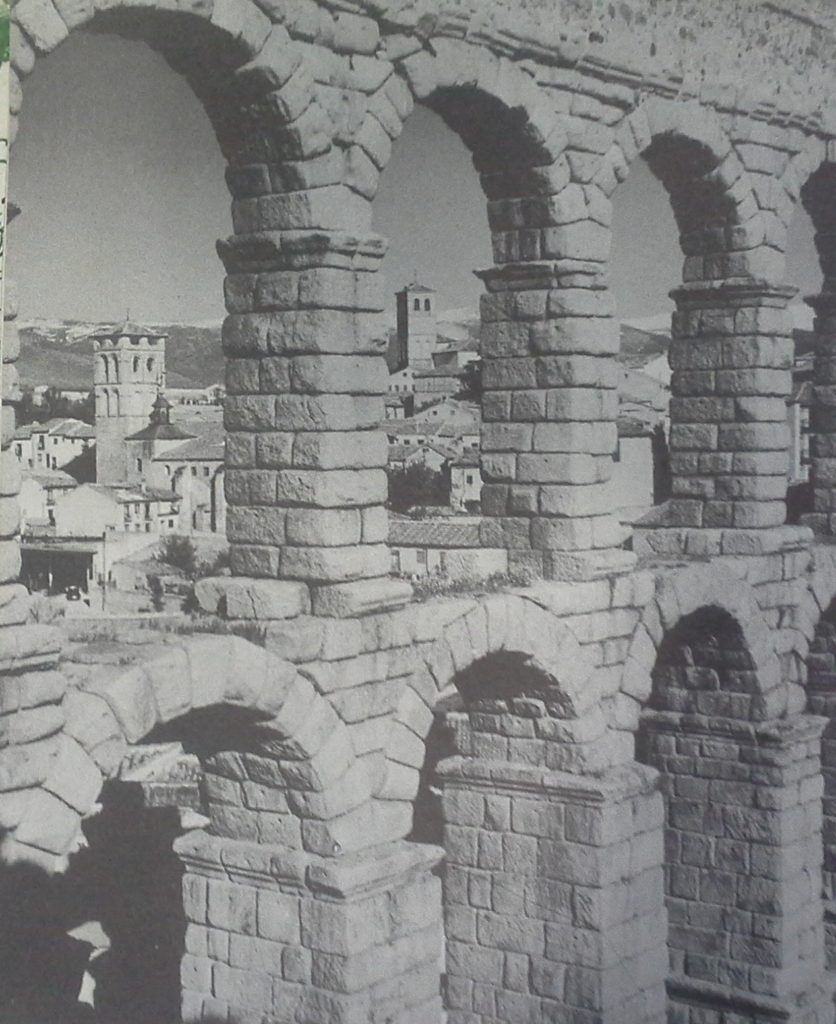
Roman law continues to influence today’s world. Still another present day reminder of ancient Rome, in addition to its language and its crumbling architecture, is its system of laws. At first, Roman law applied only to the city of Rome, but as Roman control over other areas grew, new laws were needed to provide justice for all parts of the Empire and its people. Gradually the legal ideas of conquered peoples were woven into Rome’s legal system. By this means and over several centuries, therefore, Roman law became a well organized system based on a sound understanding of justice. Thus it became possible to use this remarkable system of laws anywhere.
The men who gathered together these laws and studied and interpreted them were often thinkers and writers of great ability. They founded what is called jurisprudence, the science of law. A Roman ruler, Justinian, had these laws brought together in a code. Many of the principles of Justinians Code are used today in the laws of France, Spain, Italy, Greece and other European nations. These same principles have been built into the laws of Latin America and other countries colonized by Europeans.
The Romans passed on the civilization of the ancient world. Roman law, the Latin language and literature, and Rome’s achievements in engineering all touch our lives today. It is true that the Romans did not display the ability in art, the inquiring mind, the imagination, or the inventiveness of the Greeks, but the Romans possessed other important traits. They were practical and they were good organizers — as their laws and military system show. The Romans were also able to discipline themselves to a greater degree than the Greeks.
By the establishment of the Empire, the Romans brought unity, peace and prosperity to the Mediterranean world. As a result, the various peoples within the Empire were able to carry on their own civilizations. Rome preserved and passed along the best in these civilizations together with its own achievements. In short, Rome was the great transmitter of ancient civilization.
